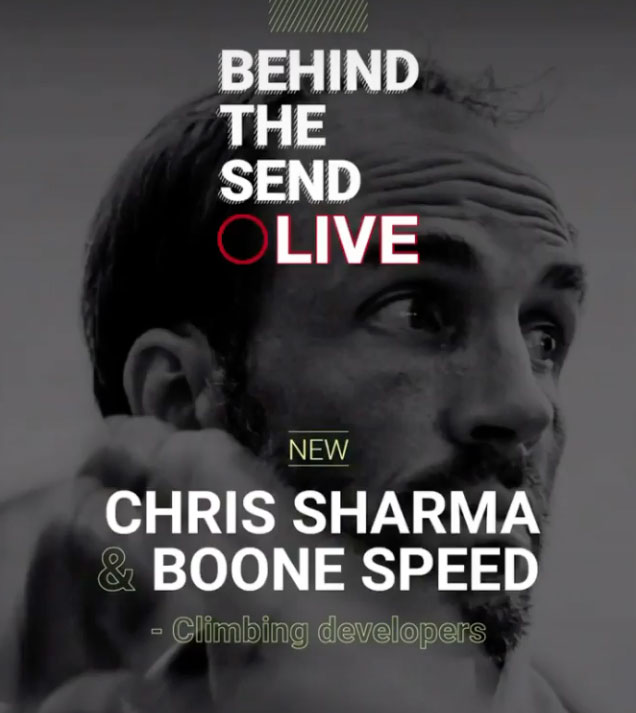

Recently Chris Sharma and Boone Speed were featured on Tenaya’s Instagram Live channel—part of an ongoing series of Instagram interviews from the Spanish shoe company this month—to talk about climbing development. Both Sharma and Speed have parlayed great success as professional climbers into additional endeavors within the climbing industry: Sharma as the owner of an eponymous brand of gyms, and Speed as the founder of Grasshopper Industries’ adjustable climbing walls.
Although the focus of the chat was outdoor route development, the two also discussed the evolution of the indoor industry. For example, Speed noted that when he first started climbing at a high level in the late 1980s, the idea of climbing and training at climbing gyms was not yet commonplace. In fact, CBJ’s gym map indicates that only four new climbing gyms opened in 1989 (for a grand total of 10 gyms across the country), reinforcing Speed’s point about gyms’ rarity at the time. “I was lucky to get into [climbing],” Speed admitted. “There were no gyms when I got into it.”
Sharma explained that he started climbing at a gym [Pacific Edge in Santa Cruz, California] in 1993. By that point, climbing gyms were becoming more ubiquitous, and with them, some delineation between indoor climbing and outdoor climbing—and questions about whether indoor climbing prowess could translate at all to real rock. “You were kind of the first generation [of gym climbers],” Speed said to Sharma during the chat. “Some people said you weren’t going to be able to climb outside.”
The rise of a veritable gym industry at the time prompted questions that continue to this day about the relationship between indoor and outdoor climbing, the understanding of differences, and the interplay of the ethics. “Teach people through the indoor environment…and with that comes more responsibility, I think, to talk about leaving no trace and understanding ethics at the crag,” said Speed. “You see people out at the crag who have never been outside before and they treat it like it’s a [gym]…It’s fun to help people along and introduce people to the sport and the culture.”
Sharma added: “I feel like as our sport has grown so much, of course there’s a lot of really talented people as our sport is becoming Olympic and all of that. It’s this watershed moment in so many ways. But it’s also this moment when it could easily go astray and people—not that they necessarily lose sight of the origins—it’s just that they’ve never been tapped into that. Their experience of climbing is entirely indoors.”
“Well, even a routesetter,” said Speed, noting the rise of routesetting as a craft and career as the sport of climbing has grown. “If you want to devote your life to routesetting, you can make a living wage now, which is just—I think it’s astonishing.”
A replay of the full Instagram Live conversation can be found here.

John Burgman is the author of High Drama, a book that chronicles the history of American competition climbing. He is a Fulbright journalism grant recipient and a former magazine editor. He holds a master’s degree from New York University and bachelor’s degree from Miami University. In addition to writing, he coaches a youth bouldering team. Follow him on Twitter @John_Burgman and Instagram @jbclimbs. Read our interview Meet John Burgman, U.S. Comp Climbing’s Top Journalist.







